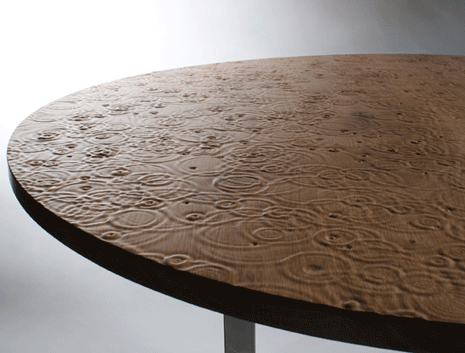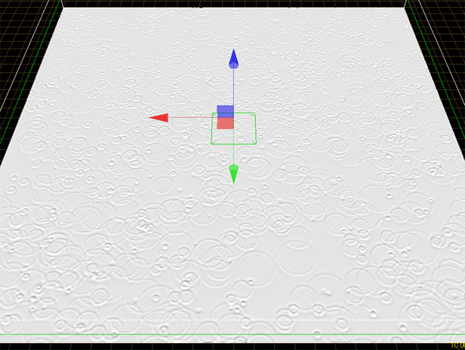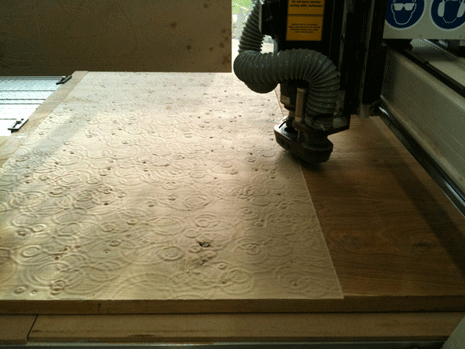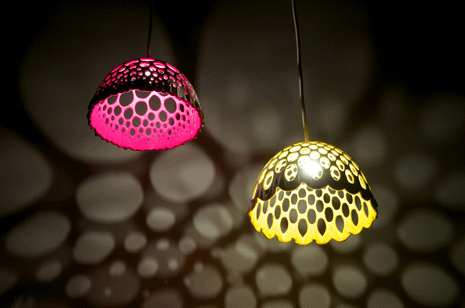
With the London Design Festival coming up next month I decided to have a look at what was happening and what events, exhibition, launches, debates and talks would be worth going along to.
As you can probably judge by the website London is going to a be a buzz of activity from 18 to 26 September with over 200 different events taking place across the capital.
I found some really interesting things that would definitely be worth going along to but something that caught my eye on the London Design Festival’s blog was the Ripple Table and Cloth Pendant Light, which Orchard Studio will be exhibiting at Tent London.
The blog states that the ‘Ripple Table is created by taking a digital simulation of rain, then CNC milling it into hardwood’. This immediately perked my interest and I thought that I better get in touch with Daniel O’Riordan of Orchard Studio and find out a bit more about how he brought his table and lights to life.
O’Riordan started Orchard Studios about ten years ago as an interior design practice. He has also been lecturing at Bath Spa University and whilst teaching students how to make things he started to increasingly use new technology himself. “I am now doing a doctorate at Bath Spa University and from that research I have developed the work that I’ll be showing at Tent. I’m really excited about it,” he says.
Part of his doctorate involves looking at how to get 3D objects off the screen and into the real world and so he began to explore with various technologies particularly CNC machines and 3D printers and looking at how to use these machines, which are traditionally quite prototype based, to produce real objects. For example, the process used to create the Ripple Table involved initially using the Reactor tool in 3D Studio Max, which allows you to digitally simulate natural forces. “I am quite interested in how the rain falls or how the wind blows through the trees and using this application I started looking at how I could emulate water,” explains O’Riordan.
However, he found the results quite clumsy as they did not look very digital. This led him to use a different application called Realflow, a fluids and body dynamics software package, and the results were much more convincing.
“Basically what I do is fire a little particle at a water surface and create an animation. Then I play that animation and at a point where I feel visually it looks good, I will stop the animation and then that is exported as a mesh to another software application, which then creates tool paths for the CNC machine,” he describes.

However, making it on the CNC machine is an extremely long process – initially 64 hours on record for constant machining but O’Riordan has now managed to get this down to 18 hours. This may seem rather time consuming and a lot of hard work involved but the price these tables will retail at will make the materials and machining time cost effective. It will retail for £1,500 and a number have already been sold at this price. “For me the process is a secondary thing – people like a story behind the work but in the end what they want is something beautiful and practical,” he says.

Similarly, the Cloth Pendant Lights (below) are made by simulating a cloth falling through the air. The process involves taking a flat sheet of material and then simulating it falling onto a geometric shape. Then again through the animation process O’Riordan will select a particular frame and then export it to the Z Corporation printer which will print it out of a plaster and potato starch material combination. “These lights are ready to go and the materials are just hard enough now to really be functional,” says O’Riordan.
Pretty interesting stuff. So, if you are keen to see Orchard Studio’s products in the flesh pop along to Tent London and whilst you are there, why not go and see some of the other 200 events taking place across the capital.







